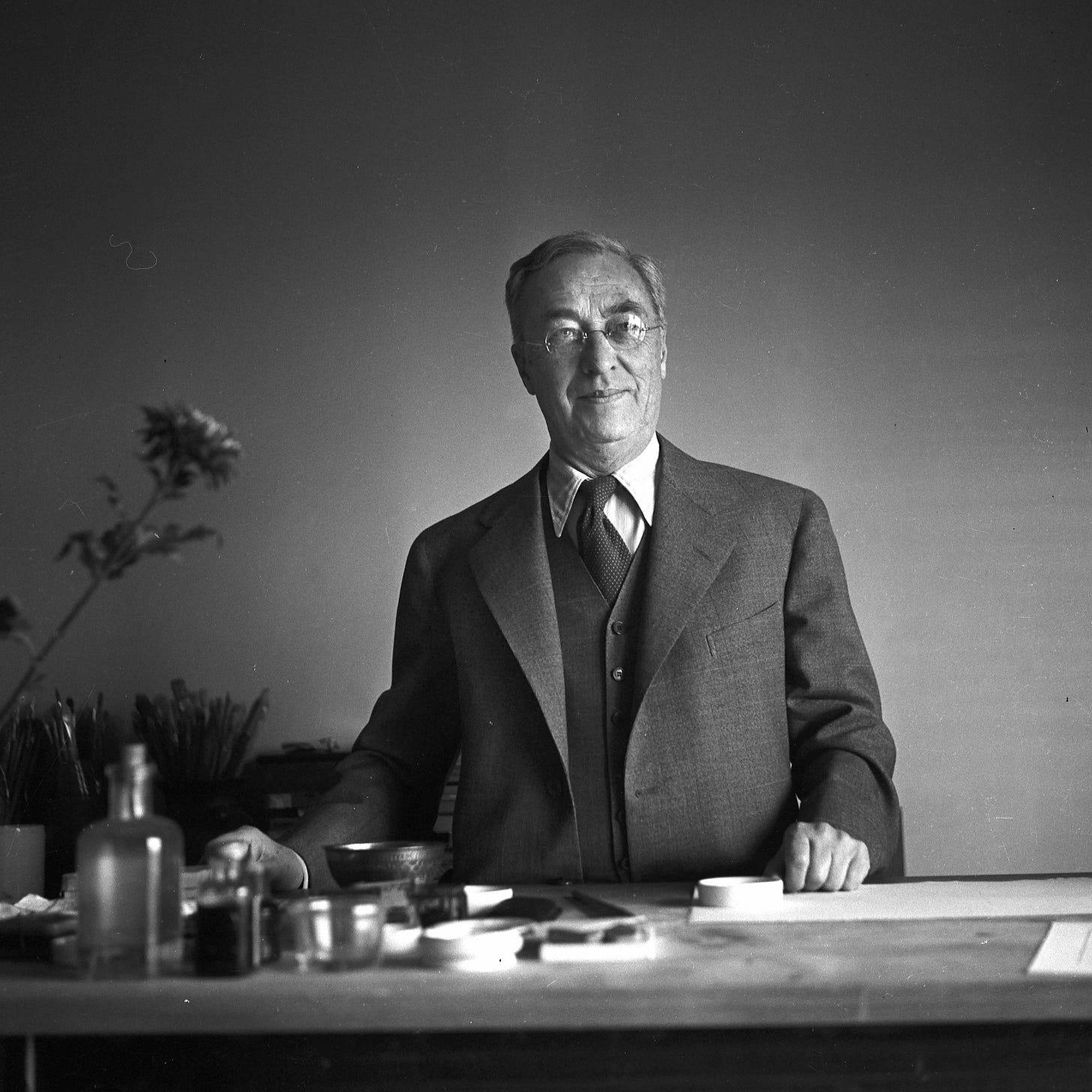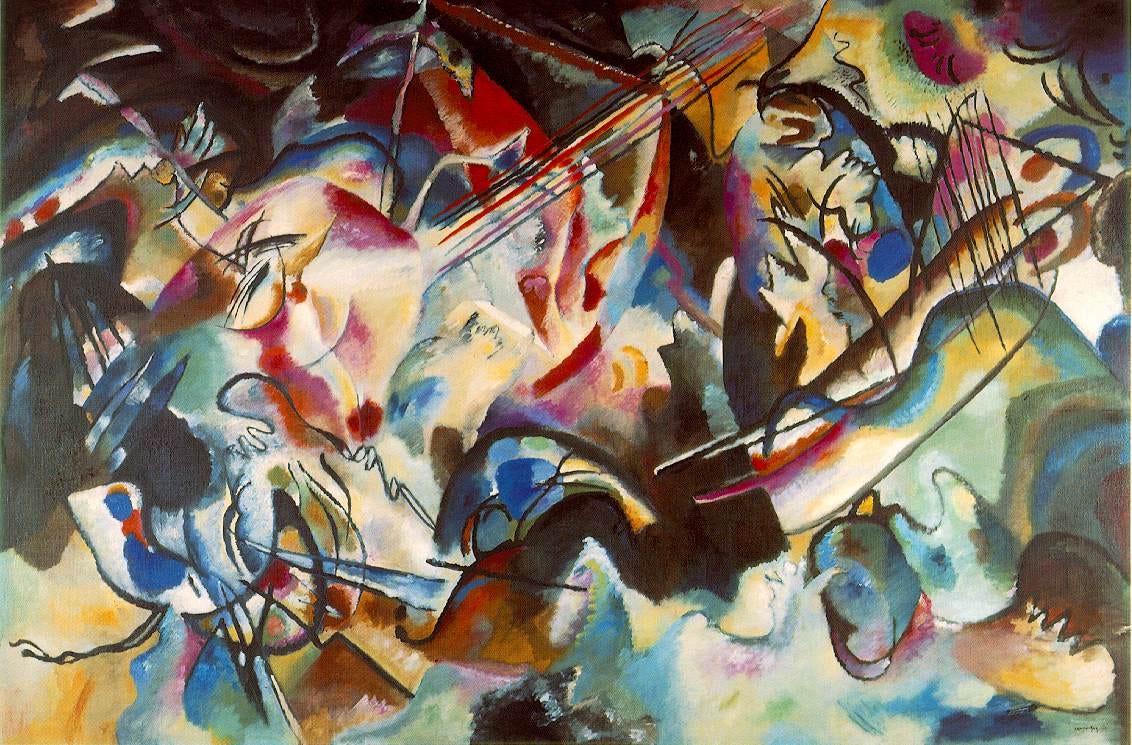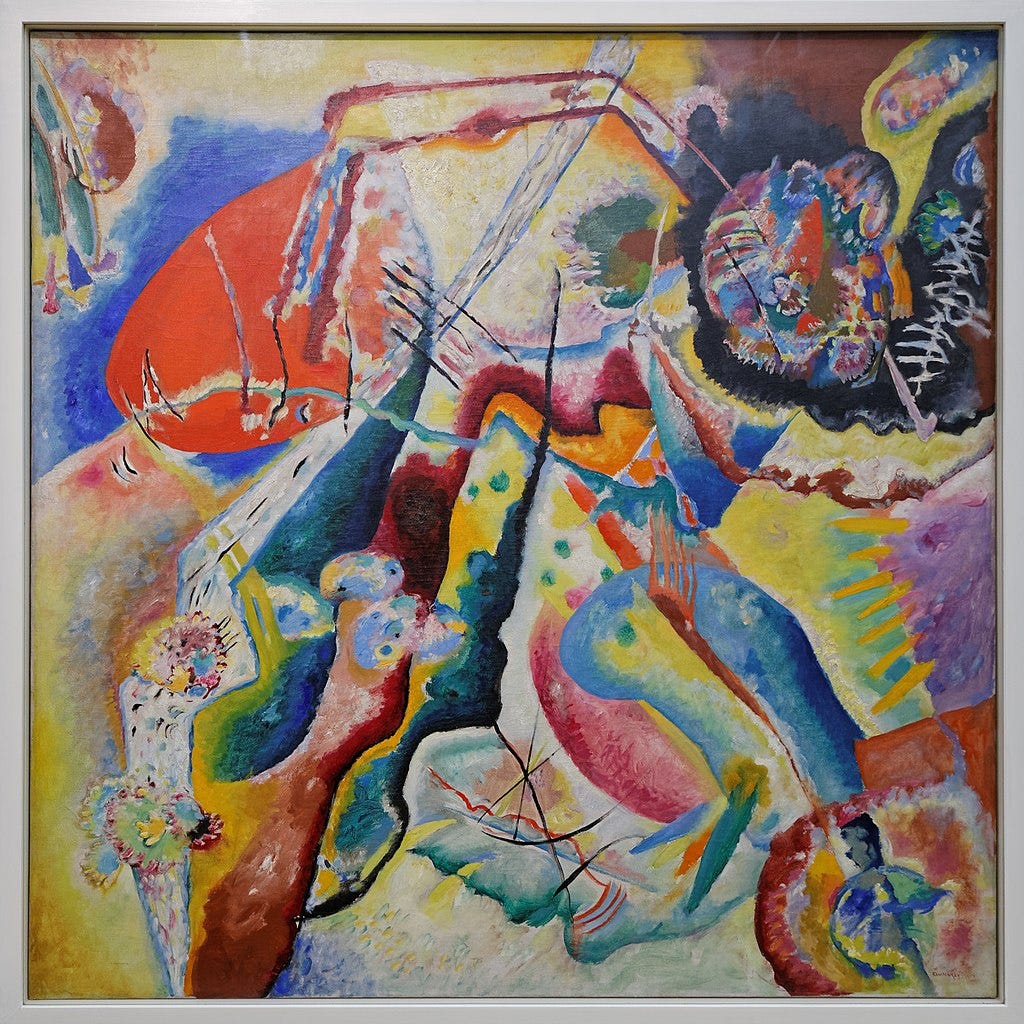Wassily Kandinsky (1866–1944) was a pioneering Russian painter and art theorist whose work laid the foundations for abstract art.
Born in Moscow, Kandinsky initially pursued law and economics, earning a degree and working as a civil servant. Yet a profound exposure to art led him to shift directions entirely. At 30, he enrolled at the Munich Academy of Fine Arts, immersing himself in European artistic movements. He taught at the Bauhaus school of art and architecture. His academic training in both analytical and creative disciplines shaped his methodical approach to abstraction, blending intellectual rigor with emotional and spiritual exploration.
Deeply religious and influenced by Russian Orthodox Christianity and later Theosophy, Kandinsky believed art could bridge the visible world and the inner life of the human soul. Colors, lines, and shapes were not mere decoration but instruments for evoking spiritual and emotional truths beyond words or literal depiction.
Kandinsky’s abstraction was deliberate. By moving away from representational art, he focused on the emotional and psychological impact of visual elements. Painting became a form of composition, with color, line, and form acting like musical notes to create harmony, tension, and resonance in the viewer’s mind. University of Texas art historian Linda Dalrymple Henderson notes, “Kandinsky sought to liberate art from mere imitation of nature, to communicate inner states directly to the viewer.”
Kandinsky’s approach to art was shaped by his fascination with synesthesia, or the blending of the senses, particularly the connection between sound and color. He claimed to experience colors as sounds and sounds as colors, which led him to believe that painting could function like music, evoking emotions directly without relying on representation.
He sought to create “visual music” through abstract compositions of line, form, and color, aiming to stimulate the viewer’s inner feelings in the same way a symphony stirs the listener. This synesthetic vision became the foundation of his theory of abstraction, where art’s power lay not in depicting the external world but in resonating with the inner, spiritual life of the observer.
Kandinsky’s ideas aligned closely with his Bauhaus colleague Paul Klee, who described art as “making the invisible visible”. Klee used line, rhythm, and symbol to map the mind’s organization of experience. Together, they treated modern art as a laboratory for psychological and spiritual exploration, studying how abstraction could influence perception, emotion, and imagination.
Modern neuroscience supports Kandinsky’s intuition. Studies show that color, shape, and visual rhythm can influence mood, arousal, and cognition, activating brain regions involved in emotion, memory, and perception. Anjan Chatterjee, a professor of neurology at the the University of Pennsylvania observes, “Visual features like color, symmetry, and proportion can evoke emotional and cognitive responses in viewers, even in the absence of representational content.”
Ultimately, Kandinsky sought a universal language of art, transcending culture, geography, and words. By abstracting to the essential elements of visual experience, he aimed to communicate directly with the spiritual soul.
References
Chatterjee, Anjan. (2016). Neuroscience of Aesthetics. Annals of the New York Academy of Sciences.
Winner, Ellen. Invented Worlds: The Psychology of the Arts. Harvard University Press, 1982.
Kandinsky, Wassily. Concerning the Spiritual in Art. Sadler, Dover Publication.






Beautiful. Thank you for this reminder. My very loud and skeptical rational mind is constantly torturing me (even after 8 years of being a professional) about the reason and motive for painting abstractly. But I am simply not interested in representation. I'm a metaphysician. And you just plopped my lineage back in front of me. (this is the real me)
Beautiful. Thank you for this reminder. My very loud and skeptical rational mind is constantly torturing me (even after 8 years of being a professional) about the reason and motive for painting abstractly. But I am simply not interested in representation. I'm a metaphysician. And you just plopped my lineage back in front of me.